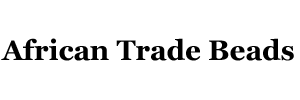Much is written about the significance of beads as a medium of currency during the trade era, but, what isn’t quite so clear is how much they were actually worth to tribes such as the North American Nez Perce. We know, from an account by Captain James Cook written in 1778 that the tribe would only accept sky-blue and white beads in exchange for furs and favors, but in what quantity?
There is little documented about the monetary value of beads to the Nez Perce, however, there is a wealth of information available about the value of trade beads in other parts of America and Canada thanks to the Hudson Bay Company. According to trade records, seed beads were among the earliest glass beads to be introduced to Amerindian tribes; often small strings not more than a foot in length to win the trust and friendship of tribe leaders.
As demand for beads grew, the Hudson Bay Company began importing glass beads from Europe to use as trading commodities. White Heart Trade Beads proved particularly popular among Amerindian tribe leaders owing to their size and two-tone aesthetic. Records from the early 19th Century show that six of these beads could be exchanged for a single beaver pelt. In the Pacific Northwest, the Russian American Company introduced the Venetian-made Russian Blues. Because they were scarce and unique to other beads, Amerindian tribes demanded far greater quantities of them in exchange for small animal pelts. According to some sources, the initial cost of a single small pelt would have been at least a dozen Russian Blues!

